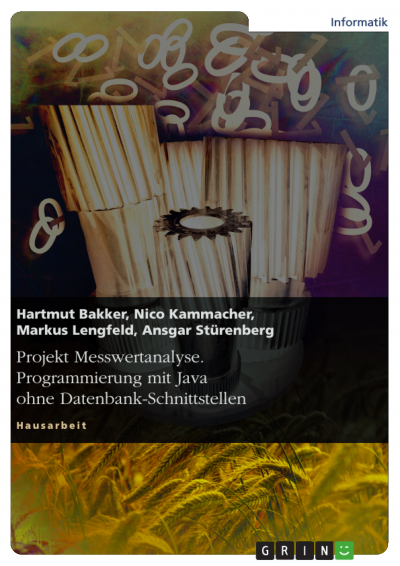 <- Measured values manipulation time at Volkswagen AG ->
<- Measured values manipulation time at Volkswagen AG ->Programmers and hobby-researchers watch out! Hartmut Bakker and Co demonstrate how digital controllers lead to instability due to dead time behavior and limit cycles.
The control theory tries to make general statements over regulation organs, regulation strategies and things to be regulated, regardless of the specific application. Of course, this is only possible on the basis of idealized assumptions, which can limit the informative value of the results of this theory. The engineer's work areas are to design control loops and, in the case of technical devices and systems, to systematically influence t he amount of material, material properties, physical state variables and amounts of energy so that an intended success is achieved.
Altogether, it turns out that many potentially sensible rule structures are known. In individual cases, mostly on the basis of qualitative aspects, it is necessary to estimate which control device appears to be the most favorable with regard to the necessary design and implementation effort and the required control quality. If the control deviation is not equal to zero, i.e. set point and actual value do not agree, the engineer must use experience to estimate how changes affect the circuit behavior. In the whole the regulator should provide that the controlled variable - depending on the algorithm used - reaches the set point as quickly as possible and that the system remains stable.
About the author:
With progress of the computer technology, new, digitally working control systems are increasingly being used diligently i n automation technology. The required circuit behavior is implemented with programmed control algorithms, which can map a complete automation system. The advantage of digital control systems is a high level of operating comfort with extensive control tasks in connection with complex types of controllers including a large parameter range, with no transmission errors occurring at greater distances. Another motivation for using digitally operating control loops is the storage of digital signals over a longer period of time without any loss of information, but the additional dead times resulting from the time quantization and the limit cycles that arise when the amplitude quantization is too high must be taken into account.
Besides, methods have been developed for digital control systems which go beyond the scope of the optimization and calculation processes of the analog control strategy. In view of the flexibility of micro and process computers, digital control loops can be implemented, which simply cannot be realized with analog control technology. In the case of equidistant sampling of analog signals at predetermined times, the time between two samplings is described as a sampling time or sampling period, which initially results in a time-discrete and value-continuous analog signal. Since digital signals can only assume a limited number of values due to the specified word length for the digital representation, the signal is quantized by the analog-digital conversion in addition. Ultimately, a time- and value-discrete signal should develop.
About the authors:
The analysis of dynamic systems in the time segment is a completely normal procedure in control engineering and the basic idea of optimizing parameters is to determine the quality of the system behavior. One can imagine, however, that there will be hardly a general usable quality index for the manifold problem definitions at different route types. There is a tendency for th e system properties to be checked by calculation and measurement technology. It is assumed, that a stable loop behavior exists flatly and that the controller further on continues to depend on certain free parameters.
Moreover, digital controllers can operate several control systems due to the high computing speed simultaneously in a cycle, whereby a whole range of control variables in cars can be converted relatively comfortably into digital form. A fundamental problem definition could be determined with "Project measured value analysis. Programming without interfaces", because the following facts (see eBook) show a science of the targeted influence of dynamic processes during the process flow and in most cases it is not easy to find the corresponding optimum.
-> Direct link to this book publication: www.grin.com/de/e-book/90729/
(ISBN 978-3-640-10033-0) (eBoo kPrice EUR 29,99 / Book-Price EUR 39,99)
The image rights belong to the author of the communication.
GRIN-Verlag
Hartmut Bakker
Krefelder Straße 19a
48529 Nordhorn
Deutschland
E-Mail: bakker@go4more.de
Homepage: http://www.ingenieur-bakker.de/Studienarbeit.php
Telefon: 01604982174
Pressekontakt
GRIN-Verlag
Hartmut Bakker
Krefelder Straße 19a
48529 Nordhorn
Deutschland
E-Mail: bakker@go4more.de
Homepage: http://www.grin.com/user/348873
Telefon: 01604982174
Keine Kommentare:
Kommentar veröffentlichen
Hinweis: Nur ein Mitglied dieses Blogs kann Kommentare posten.